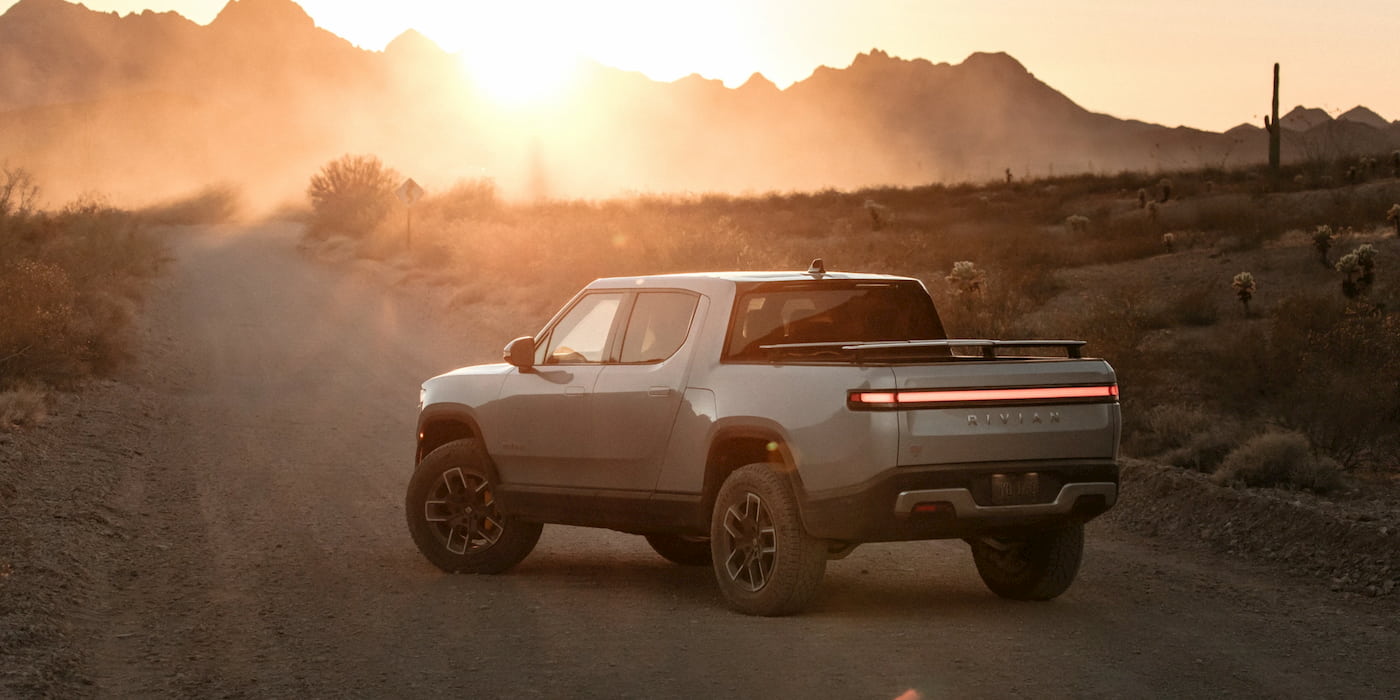
RJ Scaringe, CEO of Rivian (RIVN), sat down with Charlie Coldicott, head of global automotive research at Redburn, to discuss demand, supply chain constraints, the R2 platform, profitability, and more.
Rivian exploded on the scene last year as one of the most intriguing electric vehicle (EV) makers after going public on the NASDAQ exchange..
Investors rushed in to get their share of the future of the auto industry, pushing Rivian’s market cap well over $100 billion, surpassing both Ford (F) and General Motors (GM). Since then, Rivian has fallen back to reality as have most unprofitable, growth companies with a still respectable current market cap of around $26 billion.
However, with RIVN stock is down 72% this year many investors are wondering how Rivian lost almost three-fourths of its value.
To be fair, it’s mostly outside of Rivian’s control. Rising interest rates, geopolitical tension, and supply chain bottlenecks have slowed Rivian’s momentum while presenting hurdles for the company’s future.
In spite of this, Rivian is plowing ahead, confident it has what it takes to not only succeed but thrive in the evolving auto industry. In the third quarter, Rivian said it has produced over 15,000 EVs since the start of production while reaffirming its 2022 25,000 unit goal multiple times.
Although the company is confident, investors are more hesitant, wondering if and when Rivian will turn a profit and how it gets there.
Rivian’s CEO RJ Scaringe sat down at Redburn’s CEO Conference to discuss the road to profitability, overcoming supply chain hurdles, the upcoming R2 platform, and more.
Demand for Rivian vehicles
Despite concerns over a slowing auto industry, Scaringe says he is confident the company can sell everything it makes with a strong order backlog that stretches into 2024.
Even recently, Scaringe notes, the company is seeing a strong order intake for Rivian vehicles. The company is trying to manage its backlog because too long a wait can deter new buyers. One way of influencing orders is with price changes, which the company did in March.
Scaringe says there’s still room to stretch prices with different options, such as dual or quad motors. He adds Rivian’s unique capabilities continue driving demand.

Establishing its supply chain for the future
As the US and world venture toward 100% EV adoption, Scaringe says the least talked about hurdle is battery materials.
With nearly every automaker transitioning to an all-electric portfolio, demand for critical battery materials is skyrocketing, pushing prices higher. For example, lithium and nickel, two essential minerals for electric vehicles, are up significantly this year.
Establishing a consistent supply, Scaringe says, can take time with multiyear projects that need to come online. For this reason, it’s crucial to lock in capacity now for future production.
To that end, Scaringe says Rivian is building a “portfolio of relationships” for different setups. He adds that the recently passed Inflation Reduction Act supports domestic investments, which will help drive EV growth and ease the transition.
Rivian Profitability
In the most recent quarter, Rivian’s losses widened to $1.7 billion as the EV maker scales production. The company noted in its Q3 shareholder letter:
As we produce vehicles at low volumes on production lines designed for higher volumes, we have and will continue to experience negative gross profit related to labor, depreciation, and overhead costs.
Scaringe says it has been a “challenging year” with Rivian launching four products (two versions of the EV van, the R1T, and the R1S). Launching one vehicle is tough, but launching four is complex.
The company has experienced “unforeseen challenges” as a result, setting production back. To overcome this, Rivian’s CEO says it has first worked to establish the supply chains necessary. And now, it’s focusing on ramping production consistently.
As Rivian mentioned above, it has identified a few of these challenges (capital efficiency) and is now working to address them. For example, the company has added a second production shift to accelerate production.
Although the company is working hard to address these factors, Rivian is not out of the woods yet. The challenges are “well understood,” as Scaringe puts it, but they will still face hurdles while scaling.
Rivian has noted it has sufficient capital until at least 2025. This year, the EV start-up has focused primarily on scaling production. In 2023, Scaringe says, Rivian will work to reduce costs and drive volume, which will steer them toward positive gross margins.
The company is looking at all ways to maximize efficiency and cut costs wherever needed. For example, Rivian reduced its head count earlier this year and has streamlined many processes for its R1 models.
R2 Platform
Rivian plans to launch its next-generation EV architecture, the R2 platform, in 2026. But the company is already getting excited about the opportunity it will bring Rivian and EV buyers.
Scaringe says the R2 platform showcases the best of Rivian’s qualities, such as:
- Capability
- Aerodynamics
- Refinements
- Functionality
Although Rivian is targeting a lower price point, it will “still be very much a Rivian” as the company plans for significant demand. The company plans to implement the same “simplicity” it has learned to use with the R1 series.
The R2 platform is designed to be a much higher volume architecture and will launch in multiple global markets, according to Scaringe.
Perhaps most tantalizing for current Rivian owners, Scaringe noted that OTA software updates would allow for range improvements and that range improvements to the whole lineup were coming next year.
FTC: We use income earning auto affiliate links. More.



Comments